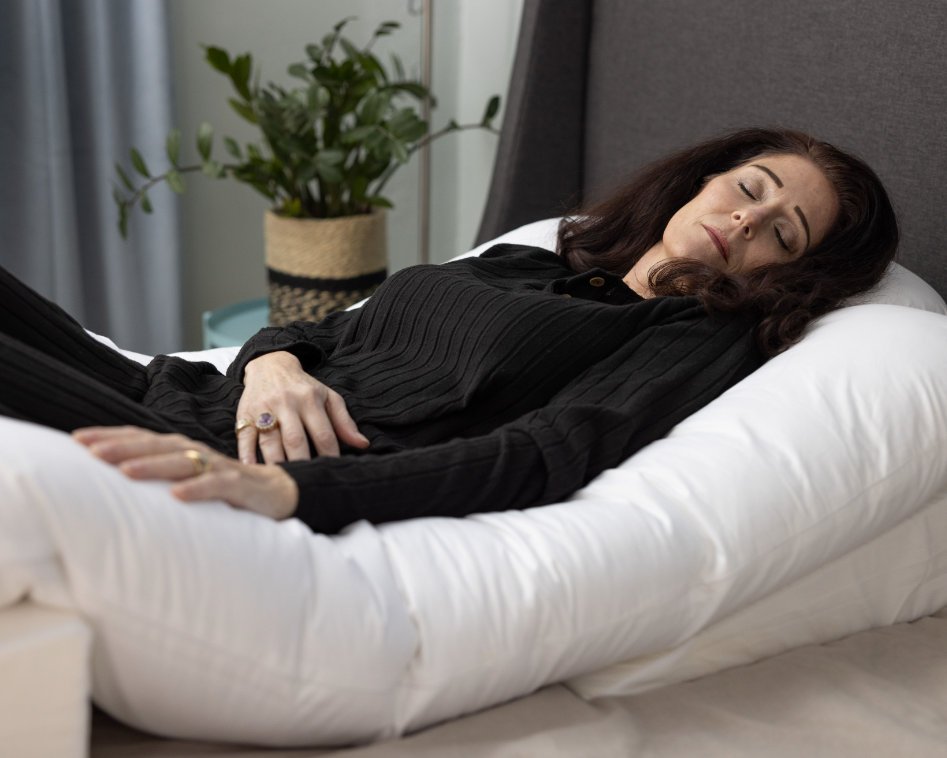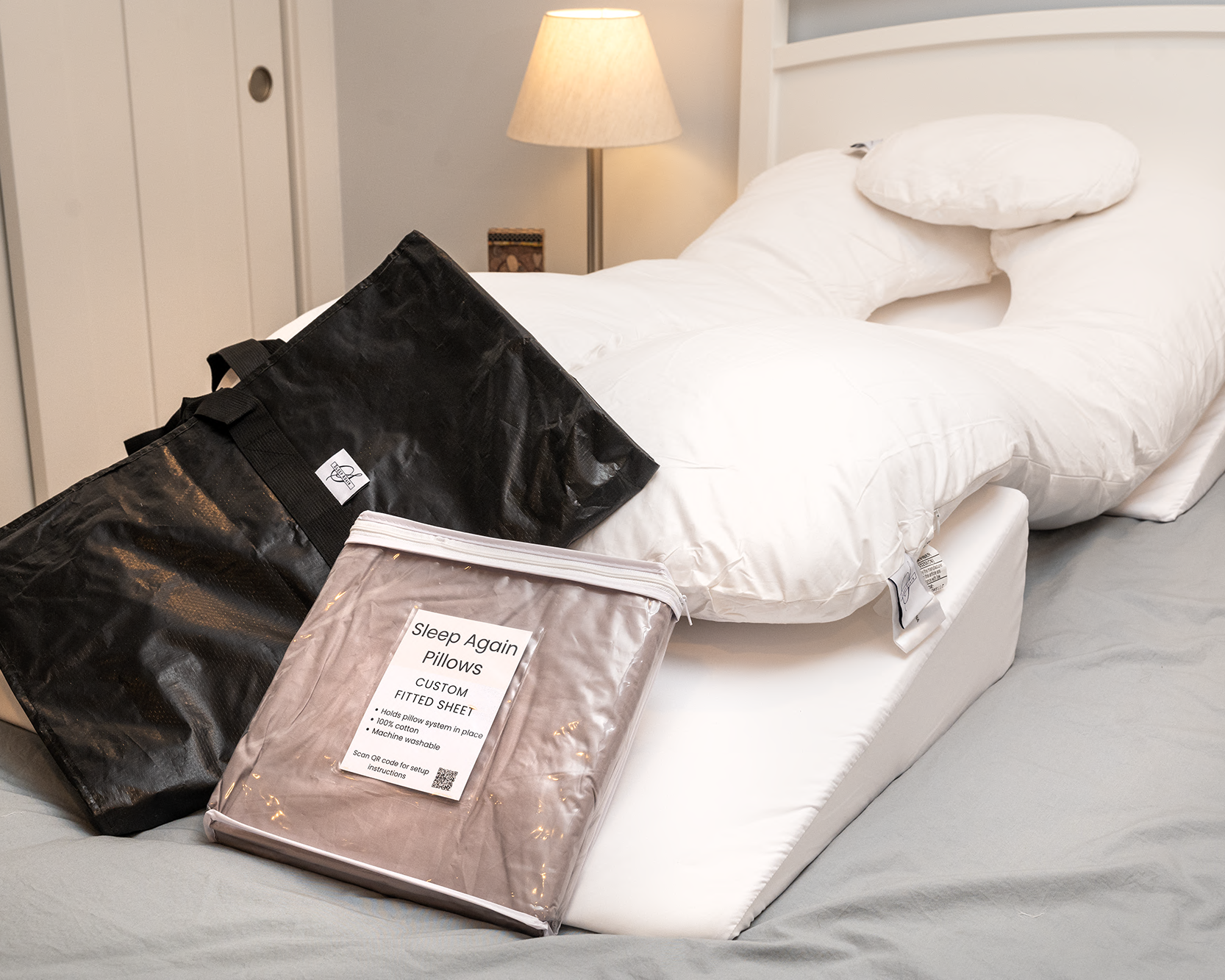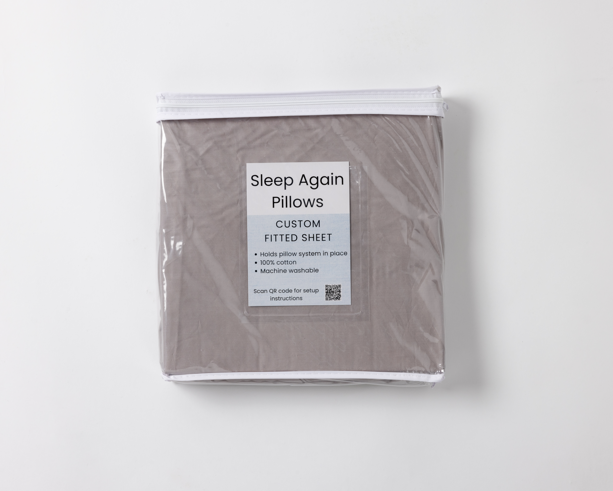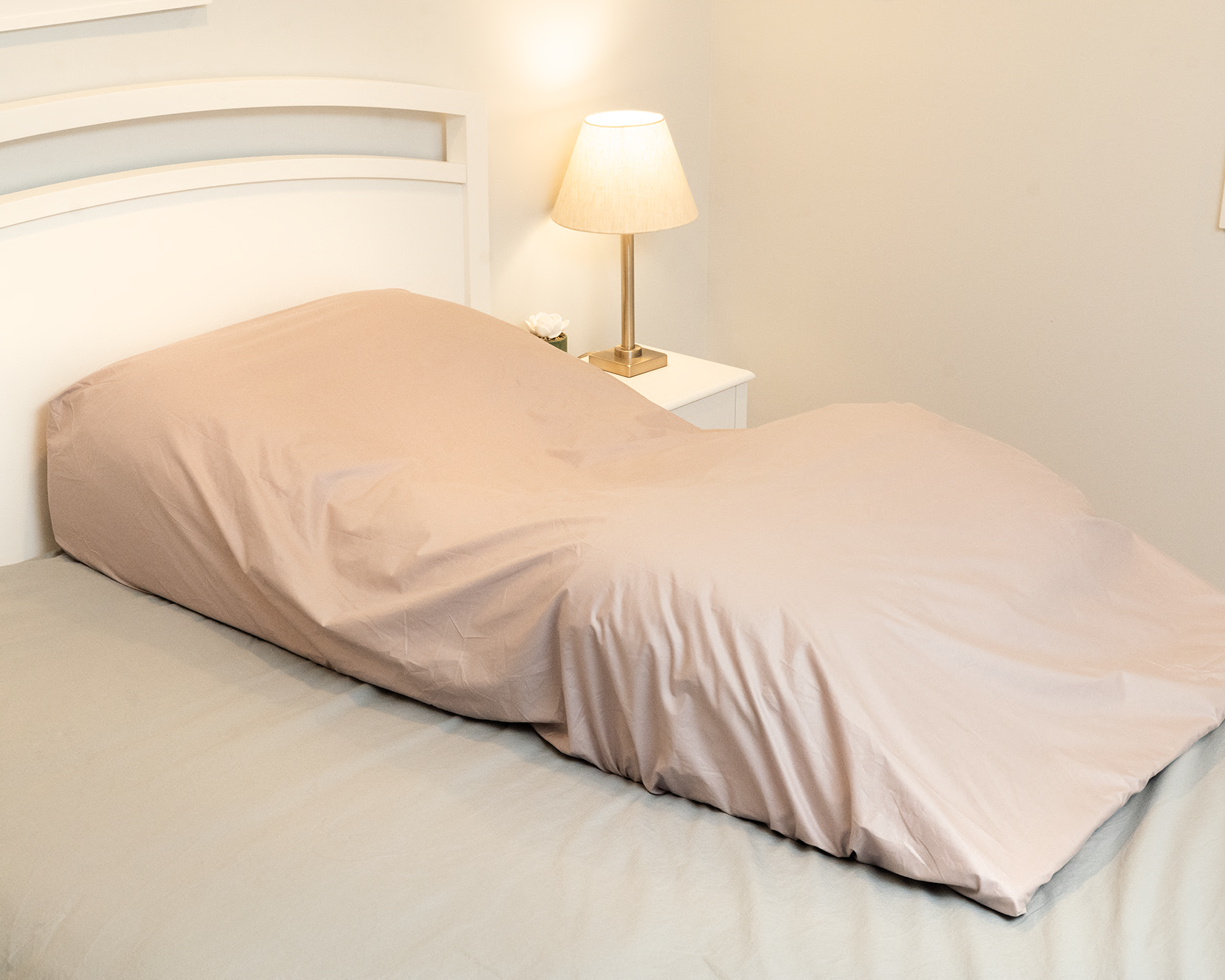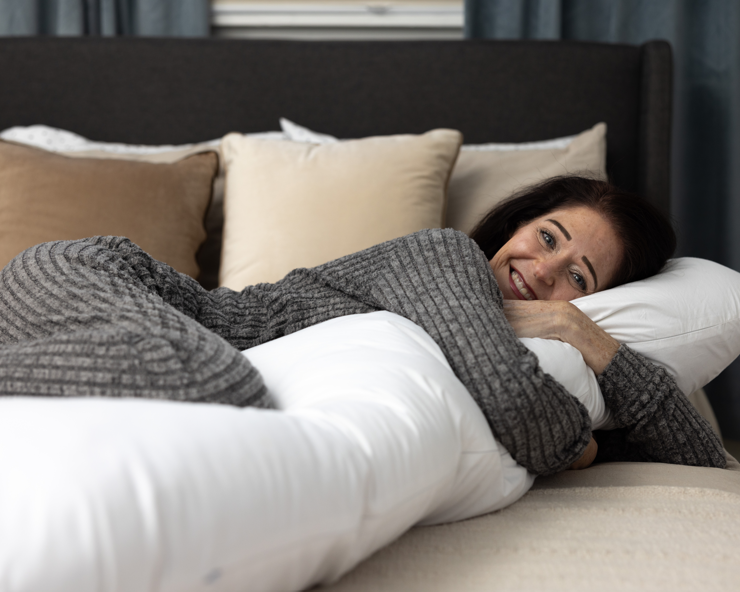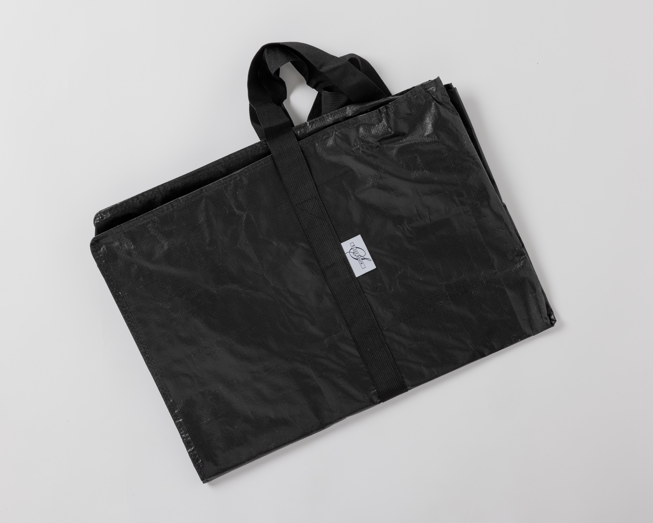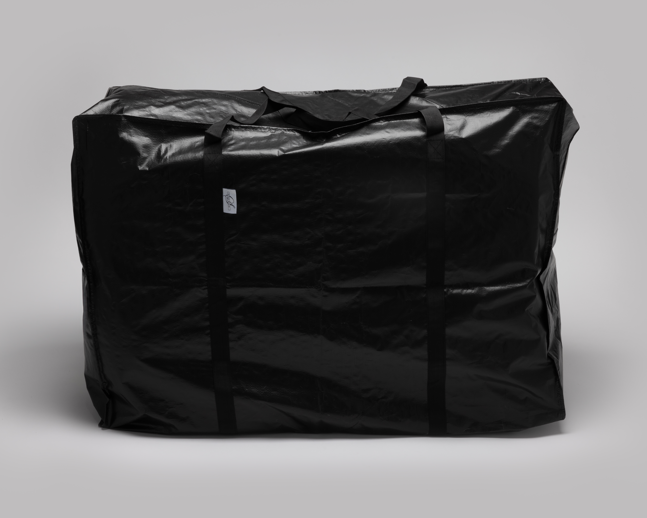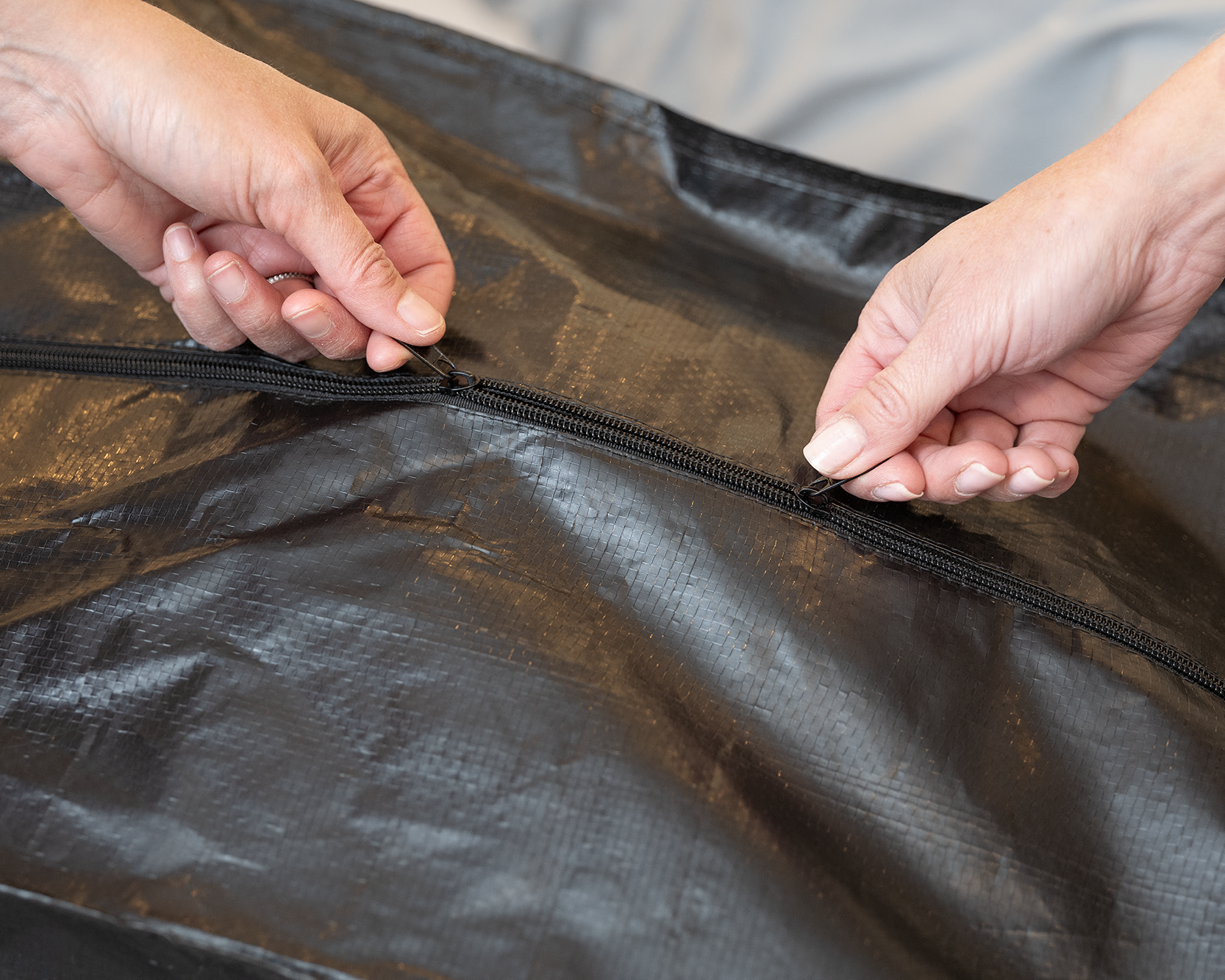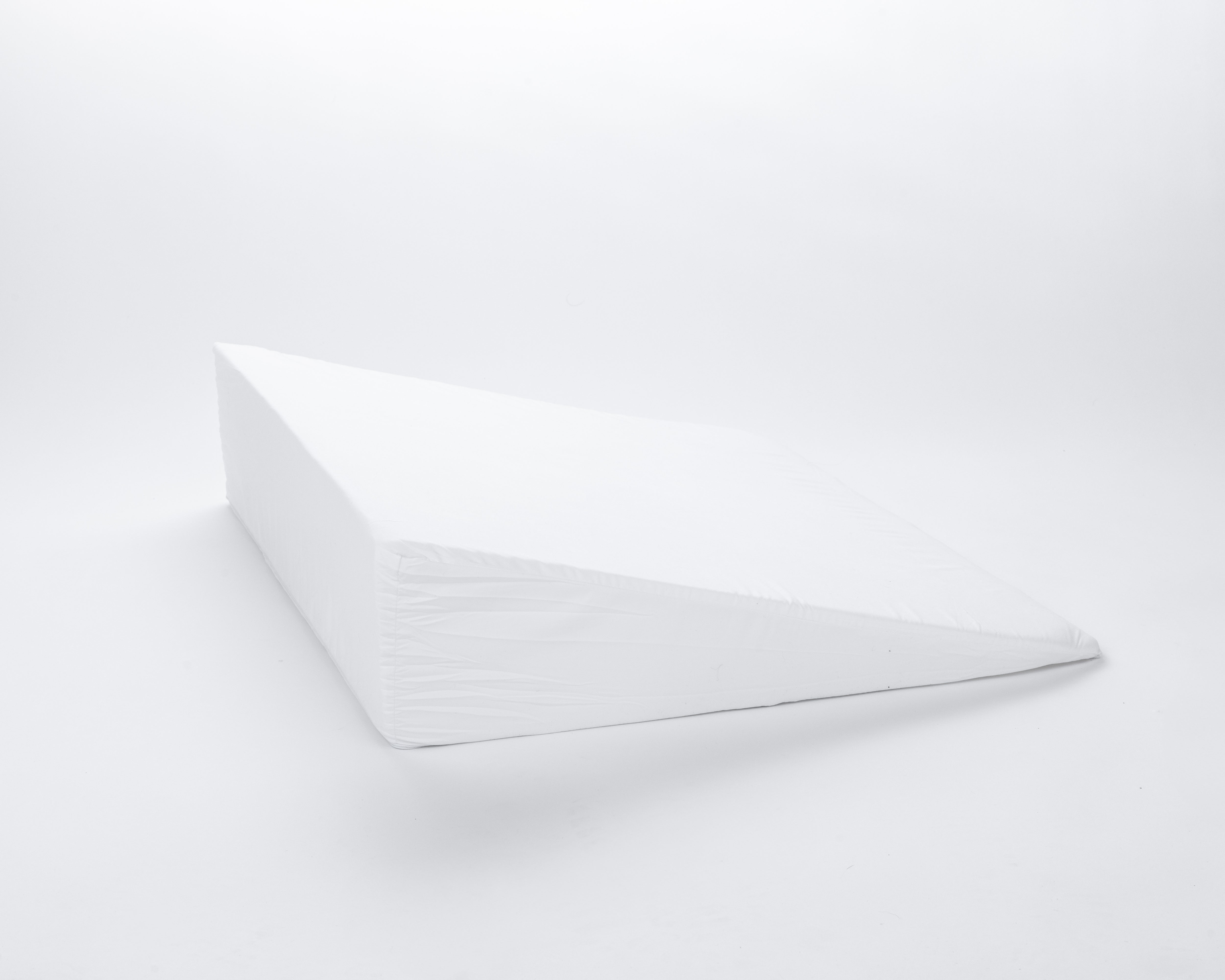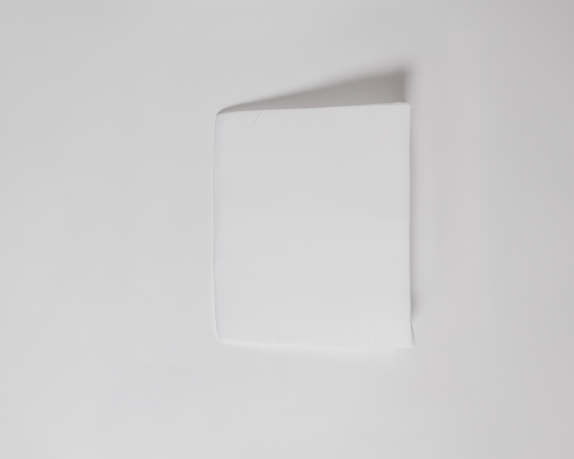Welcome to our Complete Guide on Body Pillows: How to Use them for Pain Relief, Better Sleep, and Post-Surgery Recovery
Introduction: Why Body Pillows Matter for Your Sleep Quality
In our quest for better sleep, we often focus on mattresses and regular pillows, but body pillows remain an underappreciated sleep accessory that can transform your night's rest. A body pillow is a long, supportive pillow designed to cradle your body, providing alignment and comfort throughout the night. Unlike standard pillows that support only your head and neck, body pillows offer full-body support that can alleviate pressure points, reduce pain, and help you maintain proper sleeping posture.
Body pillows have gained popularity among side sleepers, people managing chronic pain, individuals with joint discomfort, those with sleep apnea, expecting mothers, and patients recovering from surgery. They excel at relieving pressure on common pain point, including the hips, lower back, neck, and shoulders—areas that frequently cause discomfort during sleep.
Since their inception as simple rectangular cushions, body pillows have evolved dramatically. Today's market offers an impressive variety of shapes and designs, each serving specific sleep needs. From traditional rectangular pillows to those shaped like letters of the alphabet (U, J, and C), snake-like tubes, and comprehensive full-body pillow systems with support wedges—the options can be overwhelming for consumers trying to determine which design best meets their needs.
This expanded guide aims to demystify body pillows by exploring their various shapes, explaining how to use them effectively for different conditions, providing guidance on selecting the right pillow for your specific needs, and sharing proper care instructions to extend their lifespan.
While we offer expertise on pillow selection and use, please note that we are not medical professionals. This guide is for informational purposes only and is not intended to replace medical advice. If you're experiencing chronic pain, please consult with your physician.
The Evolution of Body Pillows: From Simple Rectangles to Ergonomic Designs
Body pillows have come a long way since they first appeared in the sleep market. Understanding this evolution can help you appreciate the thoughtful design improvements that have made today's body pillows more effective than ever.
Historical Development
The earliest body pillows were simply elongated versions of standard pillows—rectangular in shape and stuffed with down or synthetic fibers. These basic designs emerged in the 1980s as people began recognizing the benefits of hugging a pillow during sleep. They gained initial popularity among pregnant women seeking comfort as their bodies changed.
As sleep science advanced through the 1990s and early 2000s, manufacturers began developing more specialized shapes based on sleep research and customer feedback. This period saw the introduction of curved designs and the first letter-shaped pillows that offered more targeted support for different sleeping positions and body types.
The most recent innovations have focused on materials science, with memory foam, cooling gels, and specialized fills enhancing the performance of body pillows. Additionally, modular systems that combine different pillow elements have emerged to provide customizable support for various sleep needs.
How Body Pillow Design Affects Sleep Quality
The shape and material of a body pillow directly influence its effectiveness for different sleep concerns:
-
Spinal alignment: Properly designed body pillows maintain a neutral spine position throughout the night, reducing morning stiffness and preventing the development of chronic back issues.
-
Pressure point relief: Strategic curves and varying firmness levels in modern designs help distribute body weight more evenly, reducing pressure on sensitive areas like shoulders, hips, and knees.
-
Temperature regulation: Advanced materials address the problem of overheating that early body pillows often caused, with cooling technologies that help maintain comfortable sleep temperatures.
As we continue through this guide, we'll explore how each specific body pillow shape addresses different sleep needs and physical conditions.
Body Pillow Shapes Explained: Finding Your Perfect Match
With so many body pillow shapes available, understanding the unique benefits of each design can help you select the right one for your specific needs. Here's a comprehensive breakdown of the most common body pillow shapes and their ideal uses:

Traditional Rectangular Body Pillows
Design Features: The classic body pillow is a simple rectangular design, typically measuring 20 inches wide by 48-54 inches long—essentially an elongated version of a standard pillow.
Best For:
-
Side sleepers who want minimal support
-
People looking to keep their spine neutral during sleep
-
Those new to body pillows who want a versatile option
-
Individuals with limited bed space
-
Budget-conscious shoppers (these are typically the most affordable option)
How to Use: Hug the pillow against your chest and place it between your knees while lying on your side. This position helps align your spine, hips, and shoulders. You can also place it behind your back for support if you tend to roll during sleep.
Benefits: Rectangular body pillows promote proper spinal alignment by preventing the upper leg from pulling the spine out of position when side sleeping. They also provide something comfortable to hug, which can reduce shoulder tension and promote relaxation.
Limitations: While versatile, rectangular pillows don't offer the specialized support that contoured options provide for specific conditions like pregnancy or recovery from certain surgeries.

U-Shaped Body Pillows
Design Features: Resembling a horseshoe or the letter U, these pillows have two long parallel sides connected by a curved section that cradles the head.
Best For:
-
Pregnant women, especially in the second and third trimesters
-
Side sleepers who change sides frequently during the night
-
People who need both front and back support simultaneously
-
Those who want to feel fully enveloped and secure during sleep
-
Individuals with hip pain who need consistent support when turning
How to Use: Position yourself in the center of the U with your head resting on the curved section. Your back is supported by one arm of the U while you hug the other arm. This creates a cocoon-like sleeping environment that supports you from all sides.
Benefits: U-shaped pillows excel at providing 360-degree support, allowing you to turn from side to side during the night without needing to reposition your pillow. The dual-sided design supports both your back and front simultaneously, which can significantly reduce tossing and turning.
Limitations: These pillows require substantial bed space and may not be suitable for sharing a bed with a partner unless you have a king-size mattress or larger. Some users with shoulder pain find the U shape can put pressure on sensitive shoulders.

J-Shaped Body Pillows
Design Features: As the name suggests, these pillows resemble the letter J, with a long straight section and a hook at one end.
Best For:
-
Pregnant women who don't need full back support
-
Side sleepers who primarily sleep on one side
-
People who want head, neck, and front body support
-
Those with limited bed space who still want contoured support
-
Individuals who find U-shaped pillows too confining
How to Use: Position the curved part of the J at your head like a regular pillow, with the long straight section running down the front of your body. You can hug the straight section and place it between your knees for alignment.
Benefits: J-shaped pillows offer many of the benefits of U-shaped pillows but take up less space in the bed. They provide excellent support for the head, neck, and front of the body while allowing more freedom of movement than fully enclosed designs.
Limitations: Unlike U-shaped pillows, J-shaped designs don't provide consistent back support, which may be important for some users with back pain or those who want to feel fully supported from all sides.

C-Shaped Body Pillows
Design Features: These pillows form a C shape, with an open design that can cradle either the front or back of the body.
Best For:
-
Pregnant women who need targeted bump support
-
People with back pain who need flexible positioning options
-
Side sleepers who want customizable support
-
Those who find U-shaped pillows too warm or constricting
-
Nursing mothers who can repurpose the pillow for breastfeeding support
How to Use: The C-shape can be used in multiple positions. You can face into the C, using the curve to support your baby bump or chest while the top and bottom ends support your head and knees. Alternatively, you can position it behind you with the opening facing away, using it primarily for back support.
Benefits: C-shaped pillows are incredibly versatile and can be adapted to support different areas as your needs change. They're particularly good for pregnant women as the pregnancy progresses and for transitioning to postpartum support.
Limitations: Some users find the C-shape doesn't provide as secure a feeling as fully enclosed designs, and the open end might require additional pillows for complete support.

Full-Body Pillow Systems
Design Features: A full body pillow system combines body pillows with wedges and a neck pillow to create a complete sleep environment.
Best For:
-
People recovering from surgery, especially shoulder, hip, or back procedures
-
Individuals with sleep apnea or acid reflux who need elevated sleeping positions
-
Back sleepers who need specialized support
-
Those with complex pain issues involving multiple body areas
-
People who have been advised by medical professionals to sleep on their back
How to Use: Configuration varies based on the specific system and your needs. Typically, wedges position your upper body at an incline, while body pillows provide side support and prevent rolling. Additional smaller pillows may support the knees, neck, or other areas requiring specific attention.
Benefits: Full-body systems offer the most comprehensive support of any body pillow option. They're ideal for medical recovery situations where maintaining a specific position is crucial, such as in mastectomy recovery. They're also the best option for those with shoulder pain or recovering from shoulder surgery since they don't require side sleeping. Other beneficial applications include orthopedic surgeries, back pain, or any general surgery that requires back sleeping.
Limitations: Due to their multiple components, these systems are usually the most expensive body pillow options. They can also have a steeper learning curve for getting comfortable compared to simpler designs.
Choosing the Right Body Pillow for Your Specific Needs
Selecting the perfect body pillow involves considering your specific sleep challenges, body type, and preferences. Here's a guide to help you match your needs with the most suitable body pillow:
For Pregnancy Support
Primary Concerns: Back pain, hip discomfort, difficulty finding comfortable positions as the pregnancy progresses, reduced sleeping positions.
Recommended Pillows:
-
U-shaped pillows are ideal for most pregnant women, especially in the later trimesters, as they provide full-body support and accommodate a growing baby bump.
-
C-shaped pillows work well for women who find U-shaped options too warm or confining while still needing targeted bump support.
-
J-shaped pillows can be good for early to mid-pregnancy when less comprehensive support is needed.
-
Full-body pillow systems for early pregnancy, postpartum, or reading and watching tv in bed. Back sleeping is generally not recommended in the second and third trimesters of pregnancy.
Key Features to Look For:
-
Adjustable filling that can be modified as your body changes
-
Covers made from natural, breathable fabrics to prevent overheating
-
Curved sections specifically designed to accommodate a baby bump
-
Easy-to-clean covers as spills and accidents become more common during pregnancy
For Chronic Back Pain
Primary Concerns: Maintaining proper spinal alignment, reducing pressure on the lower back, preventing pain flare-ups during sleep.
Recommended Pillows:
-
Full-body pillow systems with wedge components provide the most comprehensive support for serious back issues.
-
U-shaped pillows offer excellent back support for side sleepers with chronic back pain.
-
Rectangular pillows can be effective when placed strategically for lumbar support.
Key Features to Look For:
-
Firmer fill materials like memory foam that won't compress too much during the night
-
Designs that encourage proper spinal alignment in your preferred sleep position
-
Adequate length to support from shoulders to knees for full spinal alignment
-
Contoured options that fit the natural curve of your spine
For Hip and Knee Pain
Primary Concerns: Reducing pressure on sensitive joints, keeping hips aligned, preventing leg crossing during sleep.
Recommended Pillows:
-
Rectangular body pillows placed between the knees can effectively align hips and reduce joint pressure.
-
U-shaped or C-shaped pillows provide consistent support when turning from side to side.
-
Twisty pillows can be configured to provide targeted elevation for painful joints.
-
Full-body pillow systems for optimal spine and lower body alignment while resting and sleeping.
Key Features to Look For:
-
Sufficient firmness to maintain proper hip alignment throughout the night
-
Designs that keep the upper leg properly aligned with the hip
-
Materials that contour to joint areas without creating pressure points
-
Length that adequately supports both the knees and ankles simultaneously
For Shoulder Pain and Recovery
Primary Concerns: Reducing pressure on the affected shoulder, preventing rolling onto the painful side, maintaining comfortable arm positioning.
Recommended Pillows:
-
Full-body pillow systems are best as they allow for back sleeping with proper support.
-
C-shaped pillows used primarily for back support can help prevent rolling onto the affected shoulder.
-
Rectangular pillows can provide arm support to reduce shoulder strain.
Key Features to Look For:
-
Designs that allow for comfortable back sleeping or sleeping on the unaffected side
-
Supportive materials that prevent rolling during sleep
-
Configurations that keep weight off the affected shoulder
-
Options for elevating and supporting the affected arm
For Sleep Apnea and Snoring
Primary Concerns: Maintaining elevated upper body position, preventing supine (back) sleeping that worsens apnea, encouraging side sleeping.
Recommended Pillows:
-
Full-body pillow systems with wedges for upper body elevation are ideal.
-
U-shaped pillows can help maintain side sleeping positions.
-
Twisty pillows that can be configured to elevate the upper body.
Key Features to Look For:
-
Components that reliably elevate the upper body to reduce apnea episodes
-
Designs that discourage rolling onto the back during sleep
-
Sufficient support to make side sleeping comfortable throughout the night
-
Breathable materials that don't impede airflow
For General Comfort and Better Sleep
Primary Concerns: Reducing tossing and turning, creating a more comfortable sleep environment, supporting proper alignment.
Recommended Pillows:
-
Full-body pillow systems are best as they allow for optimal spinal alignment and improved breathing and circulation.
-
Rectangular body pillows offer versatility for different sleep positions.
-
J-shaped pillows provide good support without taking up too much bed space.
-
Twisty pillows allow for customization based on changing preferences.
Key Features to Look For:
-
Materials that match your temperature preferences (cooling for hot sleepers, cozier for cold sleepers)
-
Weight and density that feels comfortable for hugging during sleep
-
Covers with tactile appeal that enhance the comfort experience
-
Size appropriate for your height and body type

Materials Matter: Understanding Body Pillow Fillings and Covers
The materials used in your body pillow significantly impact its performance, durability, and comfort. Here's a comprehensive look at the most common filling and cover options:
Filling Types
Memory Foam:
-
Pros: Excellent contouring to body shape, maintains support throughout the night, durable, good for pain relief
-
Cons: Can retain heat, may have an initial odor, typically heavier, more expensive
-
Best For: Those with chronic pain, people who need firm support that holds its shape
Shredded Memory Foam:
-
Pros: Adjustable firmness (often with zippered access), better airflow than solid memory foam, contours well to body
-
Cons: Can clump over time, may need regular fluffing, still retains some heat
-
Best For: Those who want customizable support with the benefits of memory foam
Polyester Fiberfill:
-
Pros: Lightweight, affordable, washable in many cases, doesn't retain heat
-
Cons: Compresses more quickly, less supportive for heavier individuals, can flatten over time
-
Best For: Budget-conscious shoppers, hot sleepers, those who prefer a softer feel
Down and Feather:
-
Pros: Natural materials, soft and luxurious feel, excellent temperature regulation
-
Cons: Expensive, requires regular fluffing, not suitable for those with allergies, less supportive for alignment needs
-
Best For: Those prioritizing comfort over therapeutic support, cool sleepers who want a traditional pillow feel
Microbeads:
-
Pros: Lightweight, moldable, doesn't retain heat, maintains shape well
-
Cons: Can make noise when moving, less environmentally friendly, less common in high-quality pillows
-
Best For: Those who need a lightweight, cooler option that's still supportive
Latex:
-
Pros: Natural option (if 100% natural latex), very durable, naturally resistant to dust mites and mold, good balance of support and comfort
-
Cons: Can be expensive, has a distinctive bouncy feel that's not for everyone, heavier than other options
-
Best For: Those looking for durability, natural materials, and consistent support
Cover Materials
Cotton:
-
Pros: Breathable, natural fiber, soft, easy to clean, widely available in different thread counts
-
Cons: Wrinkles easily, may shrink if improperly washed, less luxurious feel than some alternatives
-
Best For: Hot sleepers, those with sensitive skin, people who prefer natural fibers
Bamboo:
-
Pros: Excellent breathability, natural moisture-wicking properties, silky feel, environmentally friendly
-
Cons: More expensive, may be blended with synthetic materials, can be less durable
-
Best For: Hot sleepers, those concerned about sustainability, people who prefer a silky texture
Polyester Blends:
-
Pros: Affordable, durable, wrinkle-resistant, easy to clean
-
Cons: Less breathable, can retain heat, may not be as comfortable against skin
-
Best For: Those on a budget, people looking for easy maintenance, cooler sleepers
Minky/Plush Fabrics:
-
Pros: Extremely soft and cozy, comfortable in cooler weather, often used for comfort-focused pillows
-
Cons: Can be too warm, tends to attract lint and pet hair, may be less durable
-
Best For: Cold sleepers, those who prioritize tactile comfort, winter use
Jersey Knit:
-
Pros: Stretchy and soft like a favorite t-shirt, moves well with body movement, moderately priced
-
Cons: Can pill over time, less structured than woven fabrics, may show wear more quickly
-
Best For: Those who prioritize soft feel, people who move frequently during sleep
When selecting your body pillow, consider both the filling and cover material based on your specific needs. Many premium body pillows now offer removable, washable covers, which is a significant advantage for maintenance and hygiene.
How to Properly Use a Body Pillow for Maximum Benefit
Even the perfect body pillow won't provide its full benefits if used incorrectly. Here are detailed instructions for using different body pillow types effectively:
General Tips for All Body Pillows
-
Proper Positioning:
-
Ensure the pillow supports your natural body curves without creating new pressure points.
-
Position the pillow so it aligns your spine from head to tailbone when viewed from the side.
-
Adjust the pillow to maintain equal distance between your shoulders when side sleeping.
-
Height Considerations:
-
If you're taller than 5'10", consider longer body pillows or models specifically designed for taller individuals.
-
The pillow should ideally extend from your chin to at least between your knees for proper support.
-
Firmness Adjustments:
-
For pillows with adjustable filling, remove some fill if you feel pressure points developing.
-
Add filling if the pillow compresses too much under your body weight.
-
The ideal firmness allows for some give while still maintaining support.
Position-Specific Instructions
For Side Sleepers (Most Common Body Pillow Users):
-
Place the pillow along the front of your body.
-
Rest your head on your regular pillow (unless using a U or J-shaped design).
-
Hug the upper portion of the body pillow with your arms.
-
Place the lower portion between your knees and ankles.
-
Ensure your spine remains in a straight line from head to pelvis.
-
Adjust to create a slight bend in the knees for optimal hip alignment.
For Semi-Reclined Sleepers (Sleep Apnea, Acid Reflux, etc.):
-
Use a wedge or full-body system to create an inclined sleeping surface.
-
Position your back against the incline with your head at the highest point.
-
Use body pillows or bolsters along your sides to prevent rolling.
-
Place a regular pillow under your knees to reduce lower back pressure.
-
Ensure your head and neck are supported without pushing your chin toward your chest.
For Pregnancy (Second and Third Trimester):
-
With a U-shaped pillow, position yourself in the center with your head on the curve.
-
Pull one side underneath your baby bump for support.
-
Place the other side along your back.
-
Ensure your knees and ankles are separated by the pillow to maintain hip alignment.
-
Adjust pillow positioning as your pregnancy progresses.
For Recovery After Surgery:
-
Follow your surgeon's specific positioning instructions.
-
Use wedges and support pillows to maintain the recommended position.
-
Position body pillows as barriers to prevent rolling into contraindicated positions.
-
Use additional small pillows to elevate specific body parts as needed.
-
Ensure easy access to get in and out of bed when mobility is limited.
For Back Pain:
-
When side sleeping, ensure the body pillow keeps your spine in a neutral position.
-
The pillow should fill the space between your arm and waist to prevent upper body sagging.
-
Keep the pillow between your knees with your upper leg supported from knee to ankle.
-
If using a pillow behind your back, position it to fill the natural curve of your spine.
-
For chronic back pain, consider using multiple pillows or a full system approach.
Comprehensive Body Pillow Care Guide
Proper care extends the life of your body pillow and ensures it remains supportive and hygienic. Here's an expanded guide to caring for different types of body pillows:
Routine Maintenance
Weekly Care:
-
Fluff your body pillow daily by gently shaking it or manipulating the filling to redistribute it evenly.
-
Rotate the pillow regularly if you tend to use one side more than the other.
-
Spot-check for stains or spills and address them promptly before they set.
-
Remove and shake out the cover to eliminate dust and dander if you have allergies.
Monthly Care:
-
Vacuum the surface of the pillow using an upholstery attachment on low suction.
-
Check seams for any signs of tearing or filling leakage.
-
Air out the pillow by placing it in a well-ventilated area for a few hours.
-
Assess the pillow's support level and fluffiness to determine if it's maintaining its shape.
Washing Instructions by Pillow Type
Polyester Fiberfill Body Pillows:
-
Check the care label to confirm machine washability.
-
Use a large-capacity washer on a gentle cycle with cold water.
-
Add a small amount of mild detergent—too much soap will be difficult to rinse out completely.
-
Run an extra rinse cycle to ensure all detergent is removed.
-
Dry on low heat, adding clean tennis balls or dryer balls to help maintain fluffiness.
-
Ensure the pillow is completely dry before using to prevent mold growth.
Memory Foam and Latex Body Pillows:
-
Most solid foam pillows are not machine washable—check manufacturer instructions.
-
Remove and wash the cover according to its care instructions.
-
Spot clean the foam with a cloth dampened with mild soap and water.
-
Blot rather than rub to avoid damaging the foam structure.
-
Allow to air dry completely away from direct sunlight or heat sources.
-
Sprinkle baking soda on the pillow, let sit for several hours, then vacuum to freshen.
Shredded Memory Foam Body Pillows:
-
Some higher-end shredded foam pillows are machine washable—check the label.
-
If washable, follow the same instructions as for fiberfill pillows but allow extra drying time.
-
If not washable, follow spot cleaning instructions for solid foam pillows.
-
Consider using a waterproof pillow protector between the pillow and its decorative cover.
Down and Feather Body Pillows:
-
These can usually be machine washed but require special care.
-
Use a mild detergent specifically designed for down products.
-
Run through two rinse cycles to ensure all soap is removed.
-
Dry thoroughly on low heat with several dryer balls or clean tennis balls.
-
Expect drying to take several cycles—incomplete drying will result in odor and clumping.
-
Fluff vigorously after drying to restore loft.
Extending Your Body Pillow's Lifespan
Use Protective Covers:
-
Always use a removable, washable cover on your body pillow.
-
Consider adding a waterproof pillow protector underneath the regular cover, especially for pregnancy or if you experience night sweats.
-
Use pillowcases made of the same material as your sheets for a cohesive feel.
Storage Tips:
-
When not in use, store the body pillow flat rather than folded or compressed.
-
Keep in a dry, clean space away from direct sunlight.
-
Use a breathable storage bag rather than plastic if storing long-term.
-
Make sure the pillow is completely clean and dry before storage.
When to Replace:
-
Most body pillows should be replaced every 2 years with regular use.
-
Signs it's time for a replacement include:
-
Noticeable flattening that doesn't respond to fluffing
-
Visible lumps or uneven filling distribution
-
Persistent odors despite cleaning
-
Increased pain or discomfort when using
-
Visible yellowing or staining that won't come out
-
Allergic reactions that weren't previously present
Conclusion: Investing in Better Sleep Through Body Pillow Support
A quality body pillow represents an investment in your sleep health and overall wellbeing. While it may seem like a simple accessory, the right body pillow can significantly impact sleep quality, pain levels, and recovery from injuries or surgeries.
When selecting a body pillow, remember to prioritize your specific needs rather than trends or marketing claims. Consider your primary sleep position, any pain issues you're experiencing, your height and body type, and your preferences for materials and firmness. Taking the time to select the right pillow and learning to use it properly will ensure you receive its full benefits.
For those with chronic pain, sleep disorders, or recovering from medical procedures, consult with your healthcare provider about the best body pillow configuration for your specific condition. While body pillows offer valuable support, they work best as part of a comprehensive approach to sleep health that includes proper mattress support, good sleep hygiene, and addressing underlying health conditions.
Remember that body pillows, like all sleep products, have a limited lifespan. Regular maintenance and timely replacement when needed will ensure you continue to receive the support and comfort these specialized pillows can provide. With the right body pillow and proper care, you can look forward to more restful nights and more comfortable, pain-free days.
Disclaimer: This guide is for informational purposes only and is not intended to replace medical advice. Please consult your healthcare provider before using a body pillow for any medical condition or during pregnancy.



